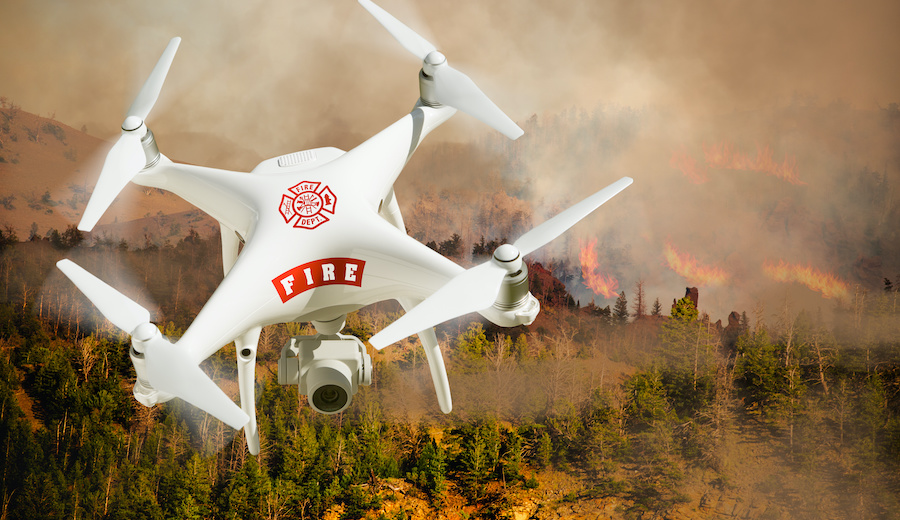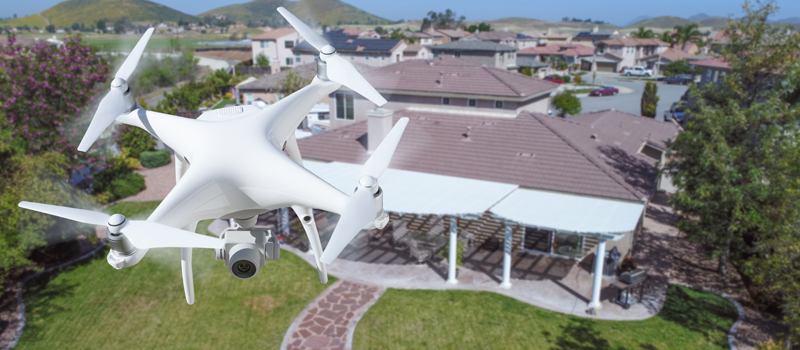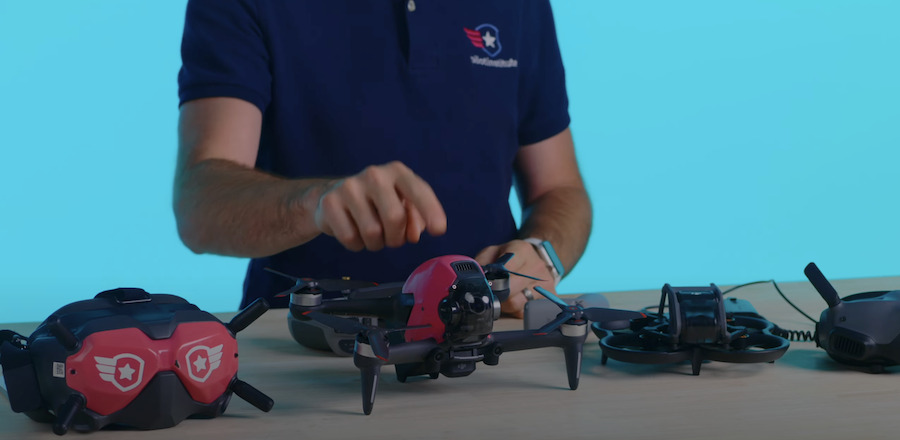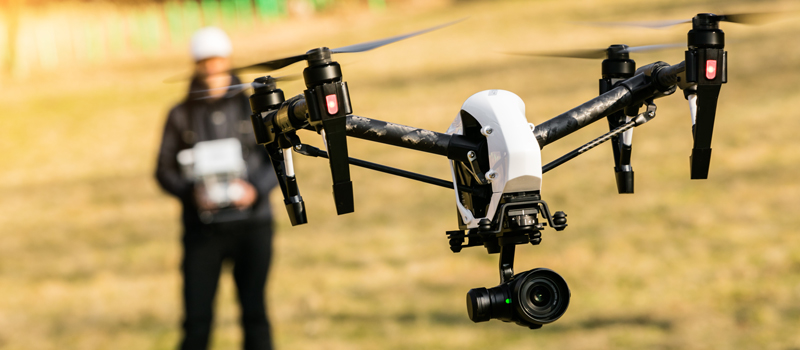-
Use cases of drones in firefighting
- 1. Hazard assessment
- 2. Crew management
- 3. Illumination
- 4. Search and rescue
- 5. Identification of hot spots
- 6. Payload delivery
-
Part 107 and Public Safety COA Course
-
Why use drones?
- 1. Reduces risk of injury or death
- 2. Can be deployed quickly
- 3. Has versatile uses
- 4. Cheap
-
Is there any license needed to use drones for firefighting?
- Part 107 remote pilot certificate
- FAA COA
-
Final thoughts
It’s taken a few years, but drones have finally become recognized as more than just toys but also viable tools for researchers, engineers, advertisers, utility companies, and professionals in various other industries. On the more humanitarian front, drones have also been used in disaster response and for saving lives.
An example of a field of emergency response where drones could prove to be useful is in firefighting. Is a fleet of drones a worthwhile investment for a fire department? How exactly can a drone be useful to them? In this article, we’re taking a detailed look at how drones could usher in a new era of firefighting practices.
Use cases of drones in firefighting
If you’re uncertain about how exactly drones can be useful in firefighting, you’ll be glad to know that their integration into firefighting methods have been met with great success around the world. Here are just some examples of how drones have improved the quality of response of firefighters:
1. Hazard assessment
There are three traits unique to a drone – they provide a bird’s eye view, they don’t expose firefighters to any hazards, and they can be deployed in a few seconds. The combination of these three factors makes them perfect tools for reconnaissance of an area. When responding to a fire, a quick drone fly-by can give the firefighters information about the location of people that need to be rescued, the extent of the fire, or if there any signs of structural damage that could put them at risk.
Coming up with a plan of attack when responding to fire might be a decision that needs to be made in minutes, but there’s no doubt that any info a drone could collect with just a few minutes’ worth of flight will prove to be invaluable.
2. Crew management
Even while firefighting efforts are underway, field commanders normally still continue to fly drones overhead to monitor the situation. This allows the field commanders to stop potential safety issues that may not be visible to the people on the ground. Mission control using a drone can also help a firefighting team to concentrate their efforts where they are needed the most or to spot small fires and put them out before they grow.
3. Illumination
At the most basic level, drones can be outfitted with a simple flashlight and provide illumination for the firefighting crew. Working in the dark isn’t just less efficient, but it can also be more dangerous for the firefighters. A flashlight mounted on a drone is much better than handheld flashlights because it can be deployed where it is needed at a moment’s notice.
4. Search and rescue
The presence of smoke and ash can make visibility difficult even after a fire has been put out. This can be problematic when there are survivors that need to be rescued, especially since these same survivors might be too weak to call out for help. In such a situation, a drone fitted with a thermal camera will come in useful. In environments where the human eye can no longer see, a thermal camera may still catch the heat signatures of humans in the area. When every minute counts towards saving lives, the speed by which drones can do this job makes them invaluable tools.
5. Identification of hot spots
A common problem that firefighters face is when “hot spots” or small smoldering embers remain after their efforts. The small fires can grow in just a few minutes, which means that the firefighters will need to put out another big fire. Hot spots are especially a concern in huge areas, such as in forest fires.
Thermal cameras mounted on drones will come in useful again in this situation. Since drones can cover huge areas very quickly, they can very easily do aerial surveys to look for hot spots. Firefighters can then be directed to put out these hot spots before they become bigger problems.
6. Payload delivery
Some drones are designed to carry a payload and those might be useful in delivering supplies and safety gear to stranded survivors. There’s also a particular drone model – the Aerenos Firefighting Drone – that was specifically made to be used for firefighting. This 28-propeller gargantuan can carry up to 661 pounds of payload and is meant to be tethered to a water supply on the ground. With its onboard spray system, we imagine that the unparalleled mobility of the Aerones drone will make it uniquely valuable to firefighters.
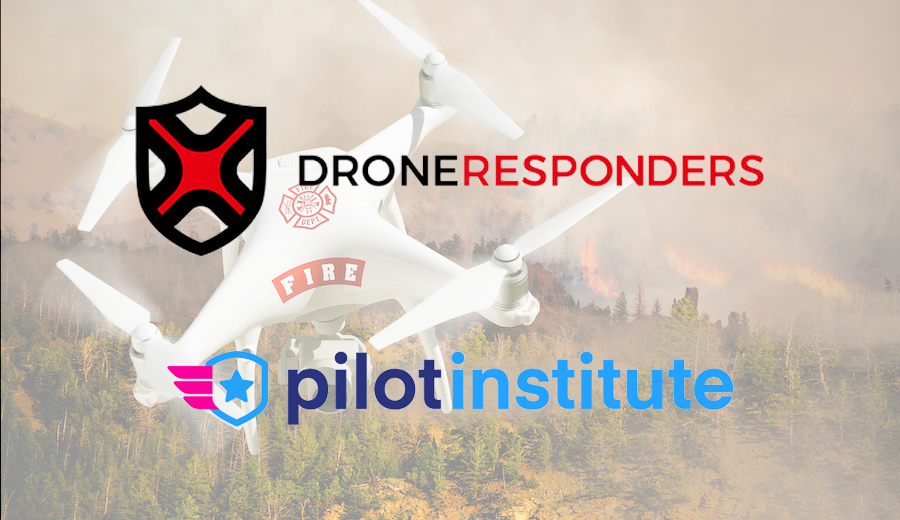
Part 107 and Public Safety COA Course
DRONERESPONDERS, the world’s largest non-profit dedicated to helping public safety drone users and Pilot Institute have partnered to offer the industry’s most comprehensive training.
This first module focuses on passing the FAA’s Part 107 exam and it comes with 15 hours of videos, a cheatsheet, flashcard app, and much more. The second module will dive into Certificate of Authorizations (COAs) and provide you with a roadmap to follow to get your department setup.
Why use drones?
You may ask: firefighters have been able to do their job for centuries without the use of drones, so why should they start using them now?
1. Reduces risk of injury or death
The number one reason to use a drone for firefighting operations is that it can help reduce the dangers to which the people are the ground are exposed to. From reconnaissance to monitoring, the fact that drones have a bird’s eye view means that they can be used to see details and scenarios that may not be apparent to the firefighters. Even simply using drones with super-bright flashlights can enhance the situational awareness of firefighters and reduce the overall risk of the operations.
2. Can be deployed quickly
Air support has always been a critical element of firefighting operations, especially if it involves large areas. In the past, air support was provided by choppers. The problem with choppers is that they typically have to come from far away and that they have to go through a long process of securing clearances and going through a pre-flight checklist before they can be deployed. When every second matters, even the slightest delay in deployment can have heavy consequences.
In contrast, drones can be set up and start flying in less than a minute. While there are still a few pre-flight routines to accomplish before flying a drone, they are much less comprehensive because flying a drone is far less risky compared to flying a helicopter. You can even have a fleet of drones surveying and monitoring a single area.
3. Has versatile uses
A drone with an interchangeable payload is a whole different beast that could change up the standard firefighting operations. While a high-resolution camera is useful for doing monitoring and reconnaissance, outfitting a drone with a thermal camera helps the field commander see what the normal human eye cannot. There have already been hundreds of documented cases of drones with thermal cameras aiding in search and rescue operations, without a doubt saving hundreds of lives as well.
There’s also the small detail of drones being able to cover huge areas of land faster than any human or land vehicle can. If firefighters need to respond to a huge fire, the information that a drone could gather by flying for just a few minutes can help them come up with better plans to address the situation without compromising their safety.
4. Cheap
When you’re a publicly funded group like a fire department, it’s always a good idea to cut down on your expenses as long your performance isn’t compromised. Between acquiring a drone and renting a helicopter for air support, the drone will always come out as the cheaper option.
Of course, a fire department can also do without any air support. However, they also lose out on the opportunity of protecting their people, responding more efficiently, and saving more lives. In that context, then a few thousand dollars certainly seems like a worthwhile investment.
Is there any license needed to use drones for firefighting?
Yes, a fire department’s drone operator will need to get an FAA-issued license before they can use a drone to aid in firefighting. Conversely, the department can also apply for a license as an organization, albeit it will have to be for a different one. Here are the two options for certification for drone use in firefighting:
Part 107 remote pilot certificate
14 CFR Part 107 outlines all the rules and restrictions for commercial drone flight. The use of drones for firefighting also falls under this classification since a drone is used to aid in day-to-day operations. More than simply restricting drone flight, the goal of Part 107 certification is to ensure that national airspace is safe for everyone and that all licensed drone pilots are familiar with aviation laws, practices, and concepts.
A drone pilot employed by a fire department would need to secure a Part 107 remote pilot certificate, more commonly known as a drone license. This will require paying a $160 testing fee, passing a 60-item knowledge test, and going through a TSA background check.
The certification process for Part 107 is much faster – you can probably finish it in a month if you need to – but the drone license itself is also quite limited. The restrictions for Part 107-licensed drone pilots aren’t unreasonable, but they can be strict and inflexible. These include not being allowed to fly a drone at night, beyond visual line-of-sight, or over crowds of people. And while there are waivers that can be secured to fly under such conditions, the time it takes to get a waiver approved is not suitable to the nature of firefighting.
FAA COA
Units of the state or local government, like fire departments, are qualified to apply for an FAA Certificate of Authorization. This is a more versatile license, as the fire department can dictate the terms of the certification that they are applying for.
The most appropriate type of COA for a fire department is a Blanket COA. This allows the group to respond to disaster areas and fly under the conditions that they have declared during the application. A group with a Blanket COA can also apply for an Emergency COA should they need to operate under conditions that they are not expressly authorized to.
Another advantage of getting a COA is that it allows a fire department to come up with their drone training program and implement their own certification process for their pilots. Thus, there will no longer be a need for individual pilots to apply for a Part 107 drone license. This could save the department a few thousand dollars in testing fees and reduce the time it takes to train new drone pilots.
The only downside is that it can take a lot of time for a COA application to get approved. From the experience of multiple applicants, it can take anywhere between 60 to 120 days. The process is also quite complicated, with the applicant needing to provide technical details on the drone, a description of the conditions under which they will be flying, and a list of the drone pilots who will be involved along with their certifications and training.
A common suggestion for emergency response teams is to have their pilots apply for a Part 107 drone license for the meantime, just to tide the group over until the COA application has been approved.
Final thoughts
Firefighting and drones are an unusual combination but is one that just works. There are few things nobler than using modern technology to help save lives, especially when it’s something as niche as drones. From helping firefighters respond more effectively to emergencies to protecting the welfare of the firefighters themselves, there’s little question about the value of drones in this type of circumstance.
The need to apply for an FAA certification is a sobering thought, especially considering how firefighters are units of the government and they are using the technology to help save lives. Although the goals may be noble, there’s no going around the fact that drones are part of the national airspace and that they must still be used responsibly.
